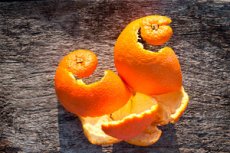
佛罗里达大学开展并发表在《农业与食品化学杂志》上的一项新研究发现,橙皮可能在改善心血管健康方面发挥重要作用。
根据疾病控制和预防中心的数据,心脏病是男性、女性和大多数种族和民族群体死亡的主要原因。
最近的研究表明,某些肠道细菌会导致心血管疾病。当这些细菌在消化过程中摄入某些物质时,会产生氧化三甲胺(TMAO)。克利夫兰诊所的研究人员表示,TMAO 水平或许可以预测未来的心血管疾病。
王宇和她的团队研究了富含有益植物化学物质的橙皮提取物在减少氧化三甲胺(TMAO)和三甲胺(TMA)产生的潜力。科学家们测试了两种提取物:极性和非极性提取物。
王解释说,为了获得极性部分,科学家使用极性和非极性溶剂来提取橙皮。
“想想沙拉酱,水或醋里的所有成分都是极性部分;油里所有远离水的部分都是非极性部分,”王说。“我们使用的溶剂并不完全像水和油,但它们的极性相似。”
研究结果表明,橙皮非极性部分的提取物能够有效抑制有害化学物质的产生。科学家们还在橙皮提取物的极性部分中发现了一种名为阿魏酰腐胺的化合物,这种化合物也能显著抑制导致三甲胺(TMA)产生的酶。
佛罗里达大学/IFAS 食品科学与人类营养学系副教授王先生表示:“这是一项新发现,凸显了阿魏酰腐胺在降低心血管疾病风险方面以前未被认识到的潜力。”
这一发现意义重大,因为美国橙汁行业每年生产500万吨橙皮。佛罗里达州近95%的橙子都用于制作橙汁。大约一半的橙皮被用来喂牲畜,其余的则被丢弃。但美国食品药品监督管理局(FDA)认为橙皮提取物对人类食用是安全的。因此,王教授希望找到橙皮更好的用途。
佛罗里达大学/IFAS柑橘研究与教育中心的王教授说:“这些结果表明,柑橘产业中经常被丢弃的橙皮,可以被重新利用成为具有健康益处的宝贵成分,例如膳食补充剂或食品成分。”
“我们的研究为开发富含这些生物活性化合物的功能性食品开辟了道路,为心脏健康提供了新的治疗策略。”

